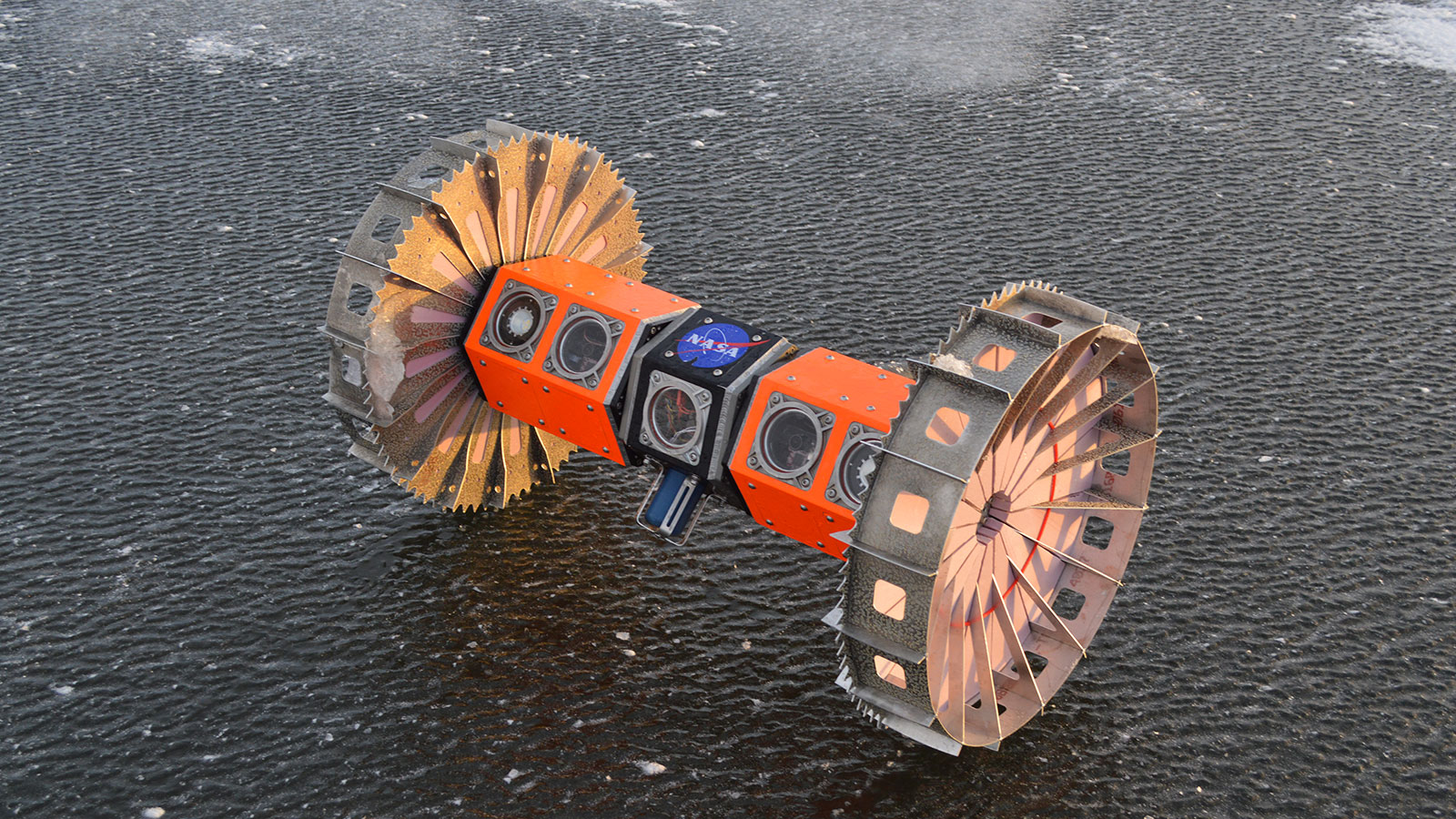
This curious-looking bot is BRUIE, the Buoyant Rover for Under-Ice Exploration, and it’s NASA’s hope for exploring distant ocean worlds such as Jupiter’s moon Europa and Saturn’s moon Enceladus. As these moons are believed to have liquid water oceans beneath thick crusts of ice, they may be the most promising locations in our solar system to search for evidence of extraterrestrial life.
BRUIE can dive deep beneath sea ice to explore ocean depths which are normally hidden from view, and it is just about to begin testing in the chilly waters off Antarctica. It will measure parameters like dissolved oxygen, water salinity, pressure, and temperature, which are important for the presence of life.
“The ice shells covering these distant oceans serve as a window into the oceans below, and the chemistry of the ice could help feed life within those oceans,” Kevin Hand, lead scientist on the BRUIE project, said in a statement. “Here on Earth, the ice covering our polar oceans serves a similar role, and our team is particularly interested in what is happening where the water meets the ice.”

BRUIE has previously been tested in Alaska and the Arctic, but this trial in the Antarctic will test the rover’s endurance in an extreme cold environment. The ocean around Antarctica is as close to an ocean on an icy moon as it is possible to get on Earth. As it is highly buoyant, BRUIE can move through the water using its two wheels to roll along the underside of the Antarctic ice.
“We’ve found that life often lives at interfaces, both the sea bottom and the ice-water interface at the top,” lead engineer Andy Klesh said in the same statement. “Most submersibles have a challenging time investigating this area, as ocean currents might cause them to crash, or they would waste too much power maintaining position. BRUIE, however, uses buoyancy to remain anchored against the ice and is impervious to most currents. In addition, it can safely power down, turning on only when it needs to take a measurement, so that it can spend months observing the under-ice environment.”
For now, BRUIE will remain tethered to the surface so its instruments such as its two HD cameras can be tested by the scientists above. Once the rover gets through this round of testing, the team will continue work until it can survive under the ice for months without a tether.



